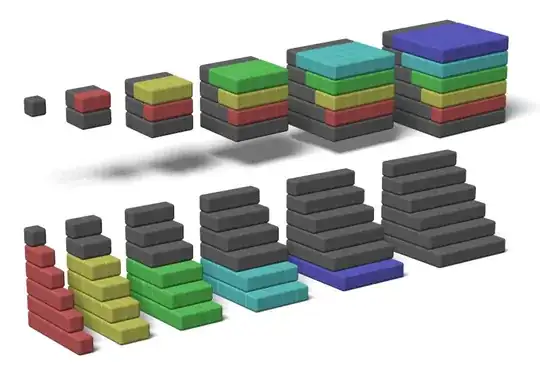$$(1+2+\cdots+n)^2=1^3+2^3+\cdots+n^3$$
I noticed this only because $\displaystyle \sum_{i=1}^n i = \frac{n(n+1)}{2}$ and $\displaystyle \sum_{i=1}^n i^3 = \frac{n^2(n+1)^2}{4}$.
But the two things look completely different and I can't think of an intuitive reason I would have seen this connection. Something like the 'Proof Without Words' images. Or a trick I could use while expanding the right hand side to transform it to the sum of cubes.
